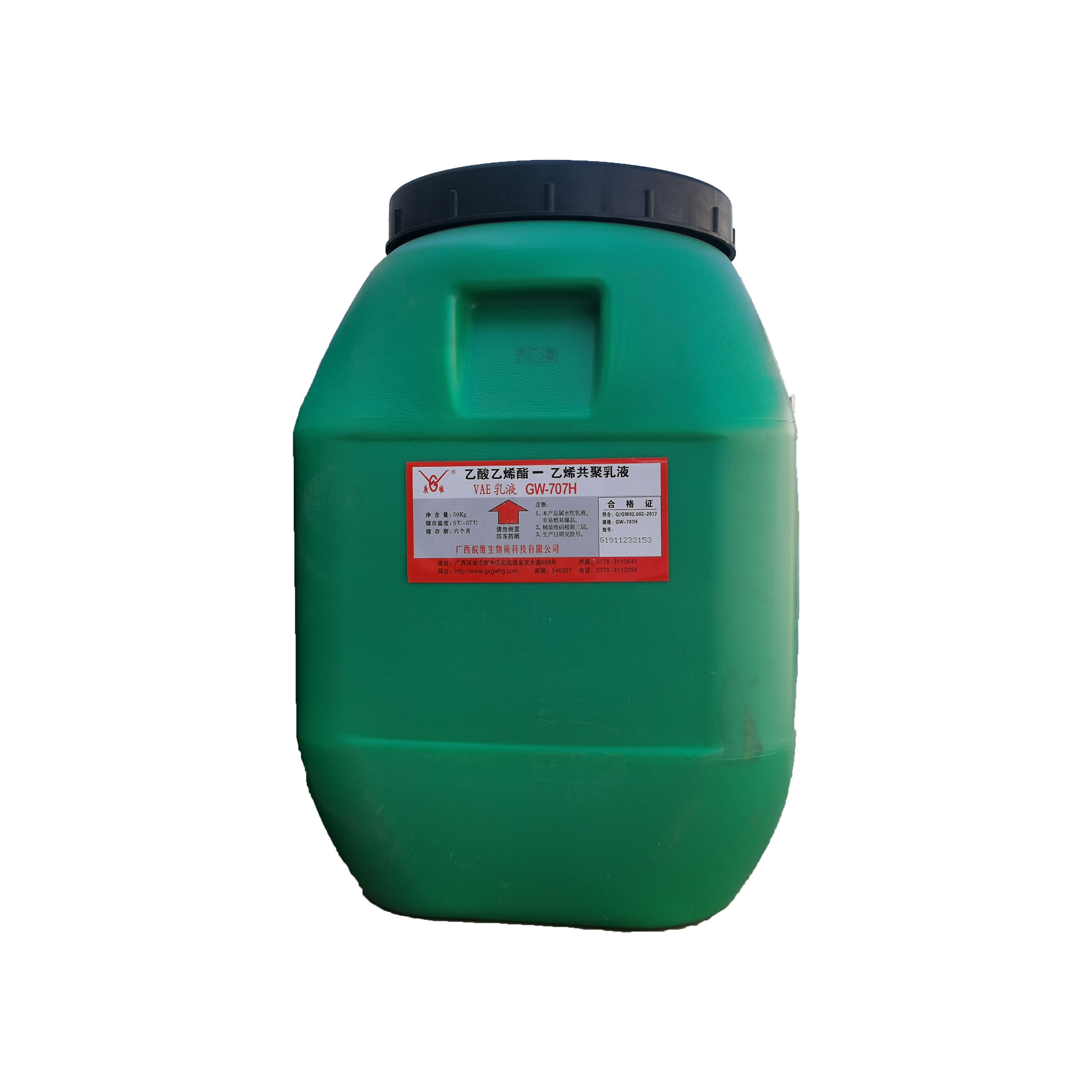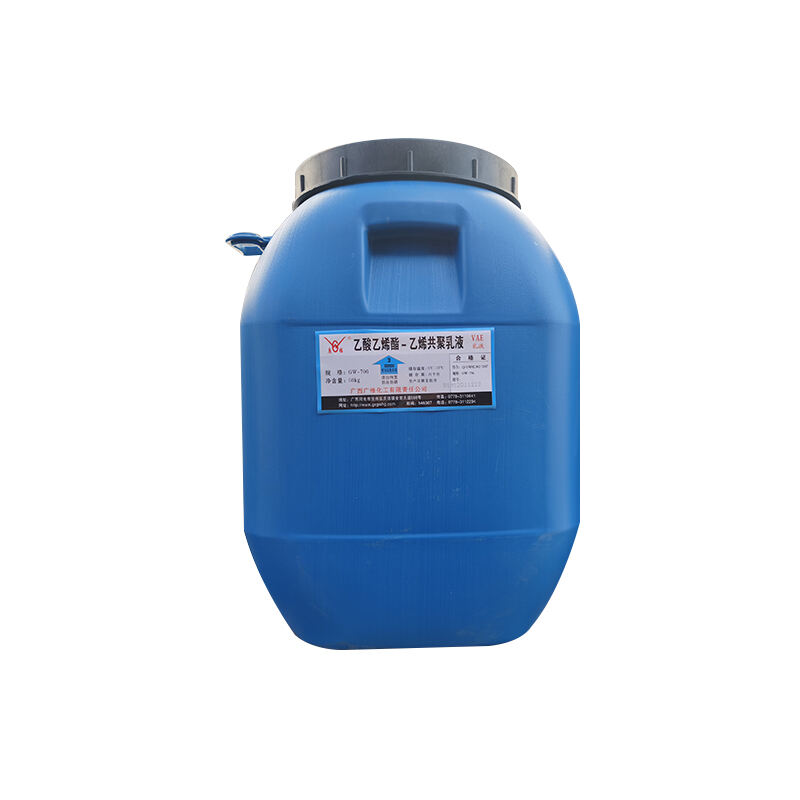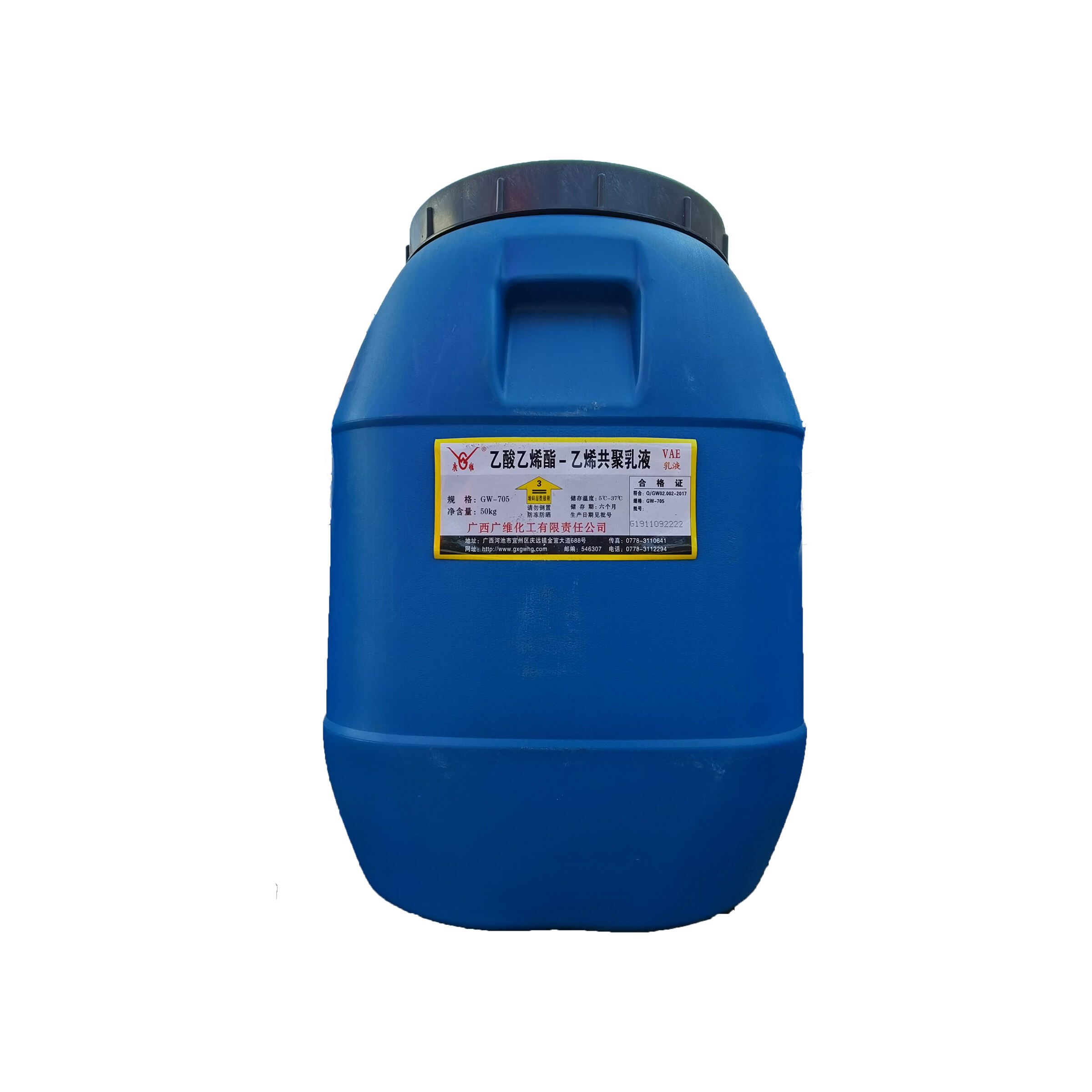VAE emulsion and PVA emulsion serve distinct application needs based on their chemical structures. VAE emulsion, with ethylene comonomers, offers superior flexibility and water resistance, making it ideal for construction applications like exterior coatings and tile adhesives. Its low glass transition temperature (Tg) enables films to withstand temperature fluctuations without cracking. PVA emulsion, however, excels in water solubility and film clarity, suitable for water-soluble packaging, textile sizing, and paper coatings. For example, VAE emulsion in cement mortars improves flexural strength by 20–30%, while PVA emulsion in detergent sachets dissolves completely in cold water. VAE emulsion bonds better to non-polar substrates, whereas PVA emulsion forms stronger bonds with polar materials like paper and wood. In summary, VAE suits durable, outdoor, and flexible applications, while PVA is preferred for water-soluble, transparent, and polar substrate bonding.


